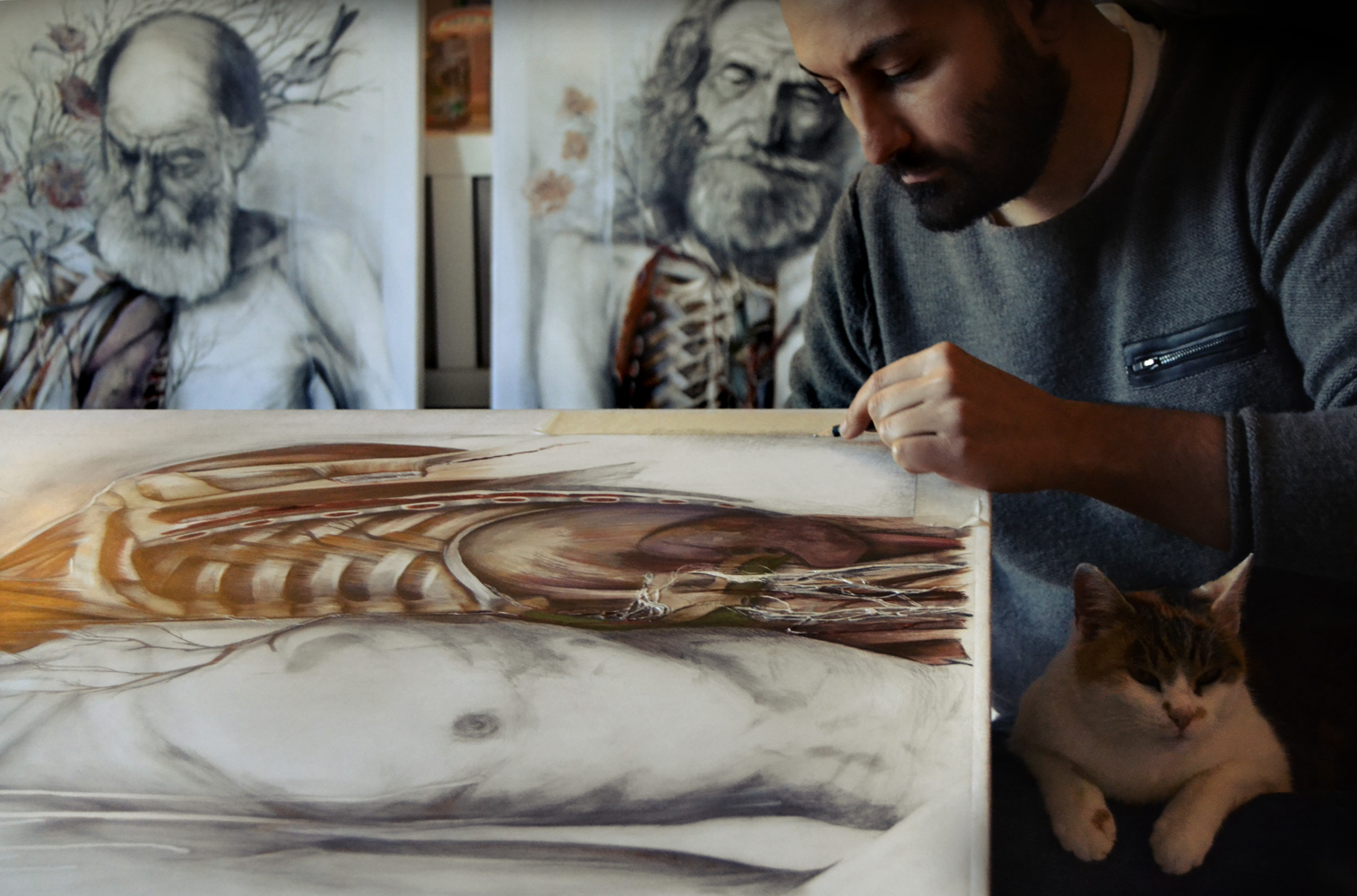
In 2009, now retired Pope Benedict XVI stated that the distribution of condoms would not help fight the AIDS epidemic in Africa. “On the contrary, it increases the problem,” he claimed. In 2013, artist Niki Johnson immortalized the holy figure by reproducing his image using 17,000 expired condoms. The piece has now found it’s permanent home in the Milwaukee Art Museum, and is garnering mixed reactions.
Johnson’s message is blaringly clear: The piece was made “in protest,” in hopes of helping “engage people in a conversation about safe sex,” she said in an interview with IntoConnection.

“Big deal,” scoffs Hyperallergic writer Debra Brehmer, who describes Johnson’s Eggs Benedict as “yawningly predictable,” and she has a point. Art history is not unfamiliar with provocative pieces that juxtapose bodily functions with religious imagery. In 1987, photographer Andres Serrano created his iconic and controversial Piss Christ, for which he received multiple death threats. Sure, this theme has certainly been explored, but it still packs a punch. Literally. In 2011, Piss Christ provoked three radical French Christians to take a hammer to the piece. More recently, how can we forget the Charlie Hebdo attacks, in which 12 of the journals cartoonists were gunned down in a response to a satirical image of Mohammad that was printed? Based on this tumultuous precedent, what’s in store for Eggs Benedict?
Although Milwaukee’s Archbishop Jerome Listeki lamented in a recent blog post that faith has been replaced by a Nietzchaen brand morality in which “the good is subjected to the whim of the individual,” he admits that critique of religion is nothing new. He wrote:
“Some may want me to be more upset at the museum for their callousness – calling for boycotts, suppression of donations or picketing. God, religion and faith have been insulted by others throughout the ages and by autocrats and movements far superior to our little local museum.”
In defense, chief curator Brady Robert stated in a Fox 6 News interview “it is our role to stimulate dialogue.” If this is the goal, then Eggs Benedict is certainly a success.
Regardless of the intended message, Johnson’s unique method of harnessing repurposed material is quite impressive. She used a classic weaving technique and laced the condoms through a mesh to create an impressively accurate image. This technique is highlighted, as the piece is double sided, allowing visitors to see both a realist image as well as the more impressionistic flip side. Although this may not have been intentional, it is also notable that the medium is expired condoms.


Although the image of Benedict XVI is convincing, it ultimately offers no protection.








